Comparing Calgary with such cities as Halifax, Montreal or St. John’s, you can notice the differences in architectural style, since the city of Calgary was founded much later than them – in 1875.
After a major fire in 1886, many of the early structures were rebuilt using sandstone, which can be seen in buildings such as City Hall, Memorial Park Library, and the Fairmont Palliser Hotel. Many other buildings reflecting the city’s past have also been preserved. List of the oldest buildings in Calgary further on calgary-future.
1. Lougheed House
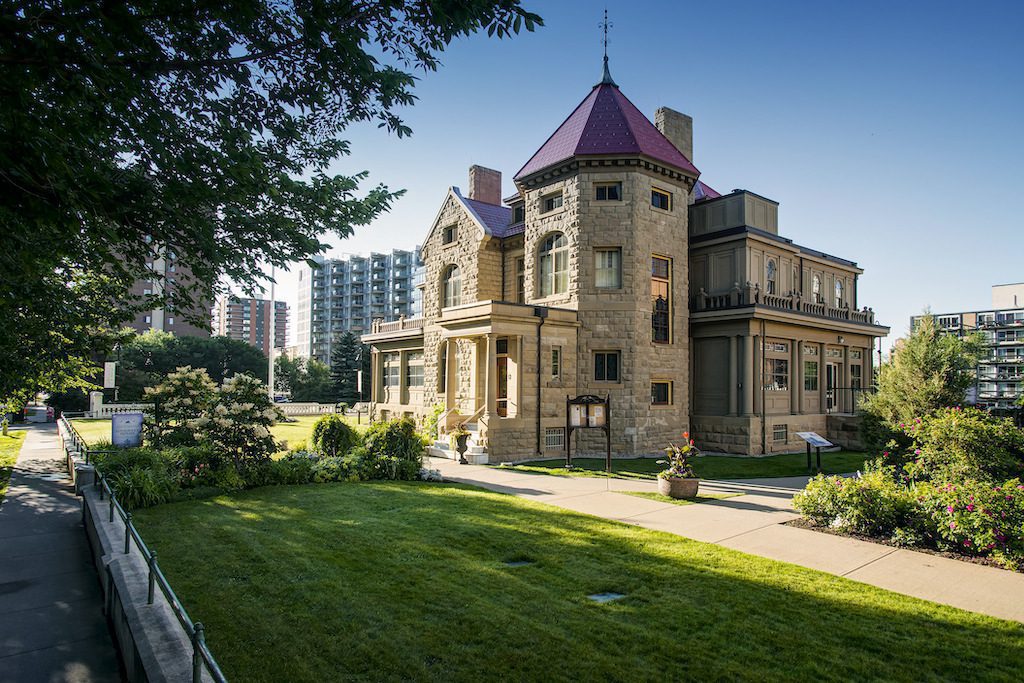
The Lougheed House is a National Historic Site in the Beltline. The building was built in 1891 as the residence of Senator James Alexander Lougheed and his wife Isabella Clark Hardisty. Built of sandstone in the High Victorian Eclectic style. Famous guests such as the Prince of Wales often visited the senator and his wife here.
This was the typical appearance of the houses of the wealthy residents of Calgary in the late Victorian era. Such mansions at that time were an object of luxury, because hot water and electricity were installed there. Inside, there are 48 rooms decorated with Spanish mahogany, Italian marble, stained glass windows and doors, and hand-painted images of Alberta’s flora and fauna.
After the death of James Lougheed in 1925, the city took possession of the house. The city authorities allowed the widow Isabella and the children to live here until her death, she died in 1936. During World War II, the upper floors were used as barracks for the Women’s Army Corps, and the basement was used by the Canadian Red Cross for blood donations. After that, the house stood empty for a long time, until in 1997 its restoration and the restoration of the sumptuous gardens nearby began. Since then, Logid’s House has become a museum and a restaurant.
The Lougheed House is designated a National Historic Site because the mansion is a rare example of an eclectic upper-middle-class home on the Canadian prairies.
2. A. E. Cross House
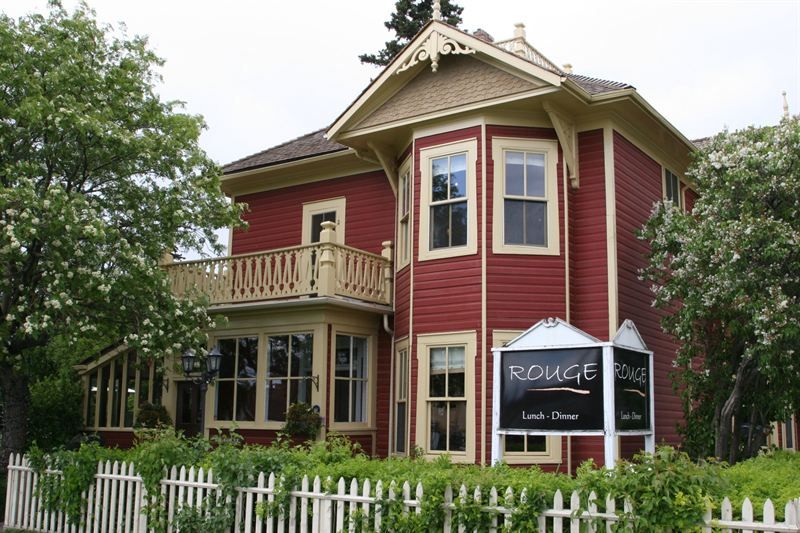
The AE Cross House is a two-story building that borders the Bow River in the historic Inglewood neighborhood. It was built in 1891, and 8 years later the building was purchased by Alfred Ernest Cross, a Calgary businessman and politician.
The value of the building lies not only in its antiquity, but also in its association with Alfred Ernest Cross and his unique architectural style typical of the time. The house has a hipped roof with transverse gables and gingerbread decoration, and its foundation is of sandstone. On the west side, the house is surrounded by a large garden and lawn. Some time after Cross’s death, the popular restaurant Rouge was placed in the building.
3. William Roper Hull Ranch House
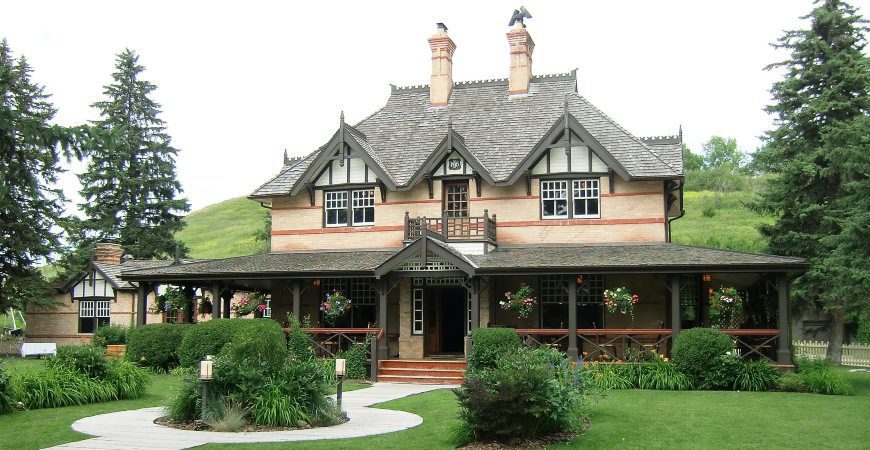
This house represents the upper-class society that arose against the background of cattle ranching in Southern Alberta. In 1892, William Roper Hull, a successful ranch owner and businessman, bought the property, and after the log house burned, he commissioned a new two-story brick structure.
The ranch house recalls elegant country entertaining in the late Victorian English style. It was here that the Calgary aristocracy gathered, held public meetings and developed noble village life.
In 1902, the building was bought by Patrick Burns, a senator and owner of a meat processing company. During the time the Burns family owned the building, it was used as a private family home as well as the Bow Valley Ranche Restaurant serving classic Canadian cuisine. In 1973, the house was purchased from Burns’ descendants by the Government of Alberta and annexed to Fish Creek Provincial Park.
4. St. Mary’s Cathedral
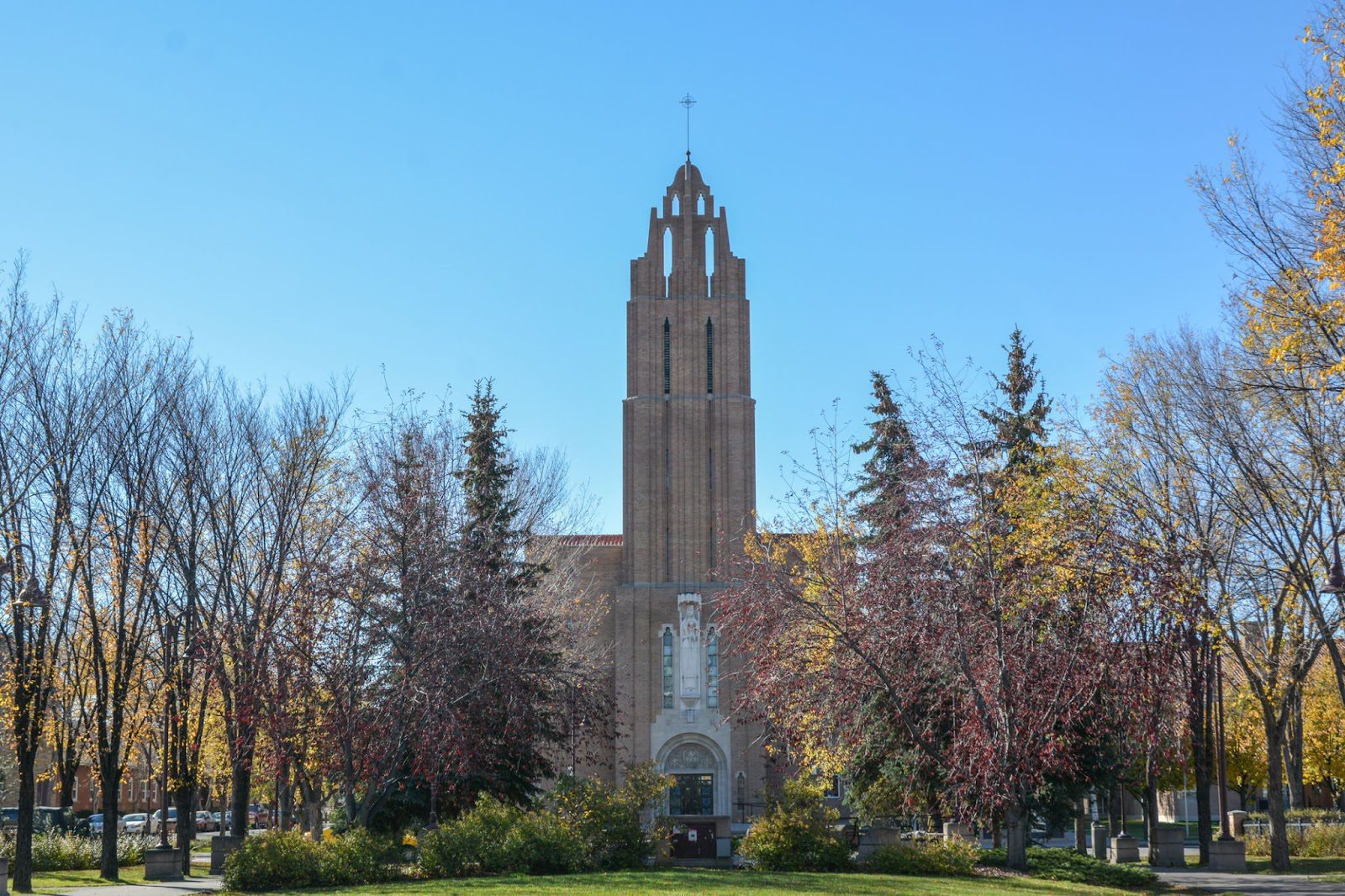
This cathedral is known for both the early history of the Roman Catholic Church in southern Alberta and its use as a station on the Canadian Northern Railway. The sanctuary is located in Roulovil, a French community in the center of the city.
The cathedral building was built in 1905 from sandstone. The northern half of the rear addition is of red brick, and the southern half is faced with cedar shingles. The front facade contains an impressive array of neoclassical elements – pilasters, a prominent cornice and a pediment. In 1985, a fire destroyed a large part of the interior, but in 1987 the building was restored.
At the beginning of its existence, the building was a place of worship for the Ukrainian Catholic community of Calgary, and in addition, it was the center of French Catholic cultural life. Concerts and theater performances were held here.
In 1911, the church sold the premises to the Canadian Northern Railway. Facilities for the maintenance of the station were arranged here, tracks were laid nearby and railway platforms were built. The railway planned to build a new station, but the war made its adjustments. In 1916, the company extended the working station by adding a red brick rear extension and a wooden trackside shed. In 1971, the station was closed. Later, the studios of the Alberta Ballet Company were located here.
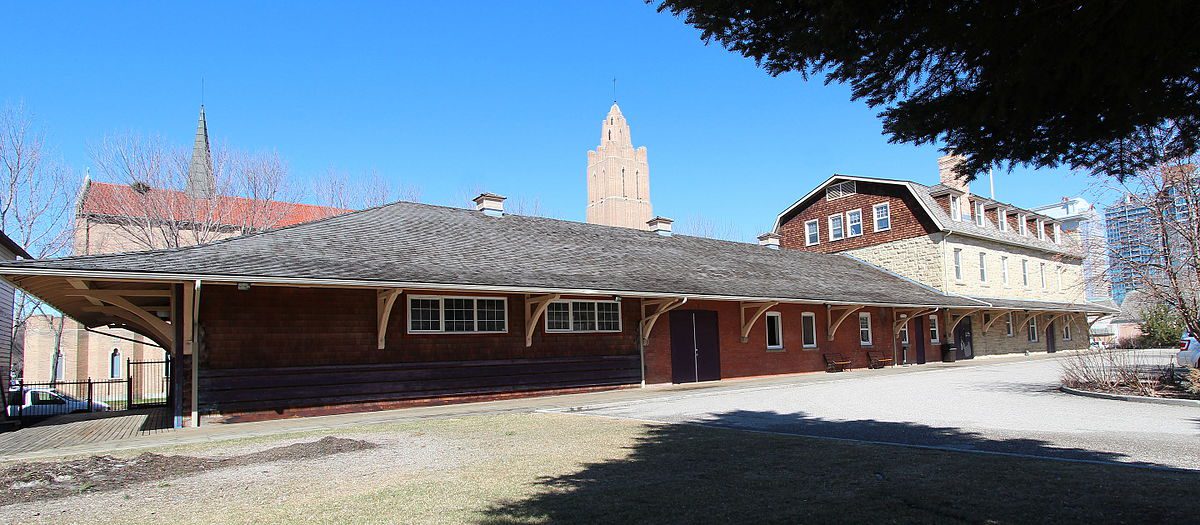
5. National Hotel
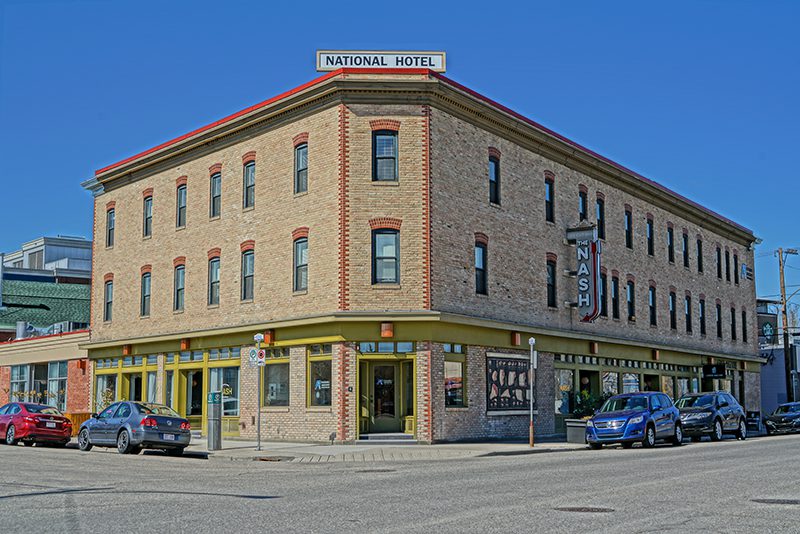
Hotel “National” is a three-story wooden building in the Inglewood area. This neighborhood was established in the 1880s and was originally home to the city’s most prominent citizens. Before World War 1, Inglewood was constantly growing and important industrial enterprises were opened here.
The hotel was built in 1907, and it began operating in 1908. The station of the Canadian Pacific Railway was located nearby. The preserved National Hotel is associated with Inglewood, which housed a brewery, stables, factories, etc. The hotel building itself reflects the Edwardian commercial architectural style typical of early Alberta hotels built in working-class neighborhoods.
This style is especially notable in the upper tin cornice and red brick segmental arches. The sandstone foundation and yellow brick cladding indicate the use of local materials during construction. These features, along with the building’s rich history, have made the hotel an important Calgary landmark. After the hotel closed, it housed the upscale restaurant The Nash.
6. Grain Exchange Building
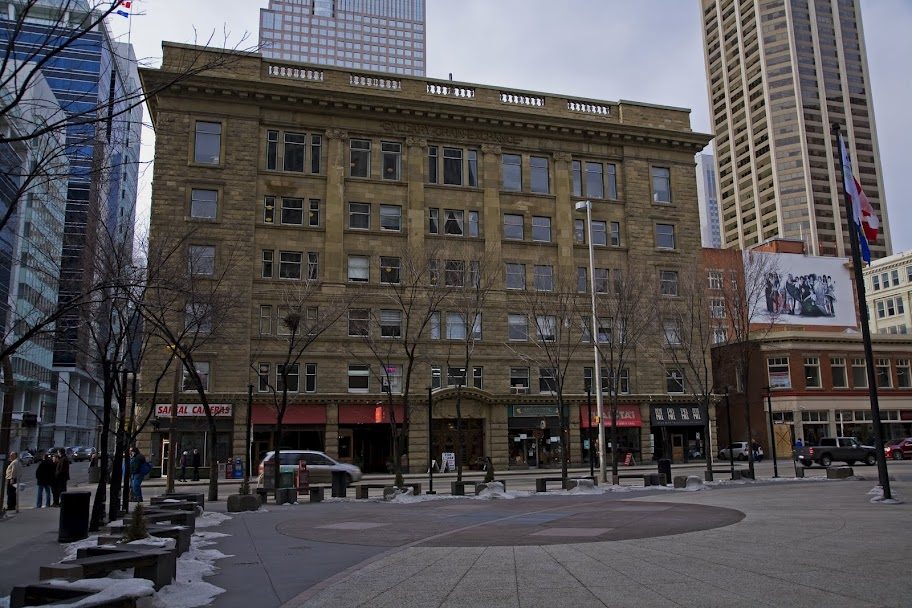
In 1909, a 6-story skyscraper was built, which housed the grain exchange. Since then, the city has grown so much that the tallest skyscraper in Calgary has become one of the lowest buildings in the city center.
Such a tall building at that time was built because since 1908 the value of real estate on Stephen Avenue began to rise rapidly. By 1912, it had increased by 1000%. This forced developers to build taller buildings in order not to expand and overpay.
The building was constructed from a combination of sandstone and reinforced concrete, which contributed to its durability, as the concrete prevents any potential rotting of the sandstone. By the way, there was the first passenger elevator in Calgary.
After the cessation of grain operations, the building became a center for retail businesses, private companies and non-profit organizations.
7. King Edward Hotel
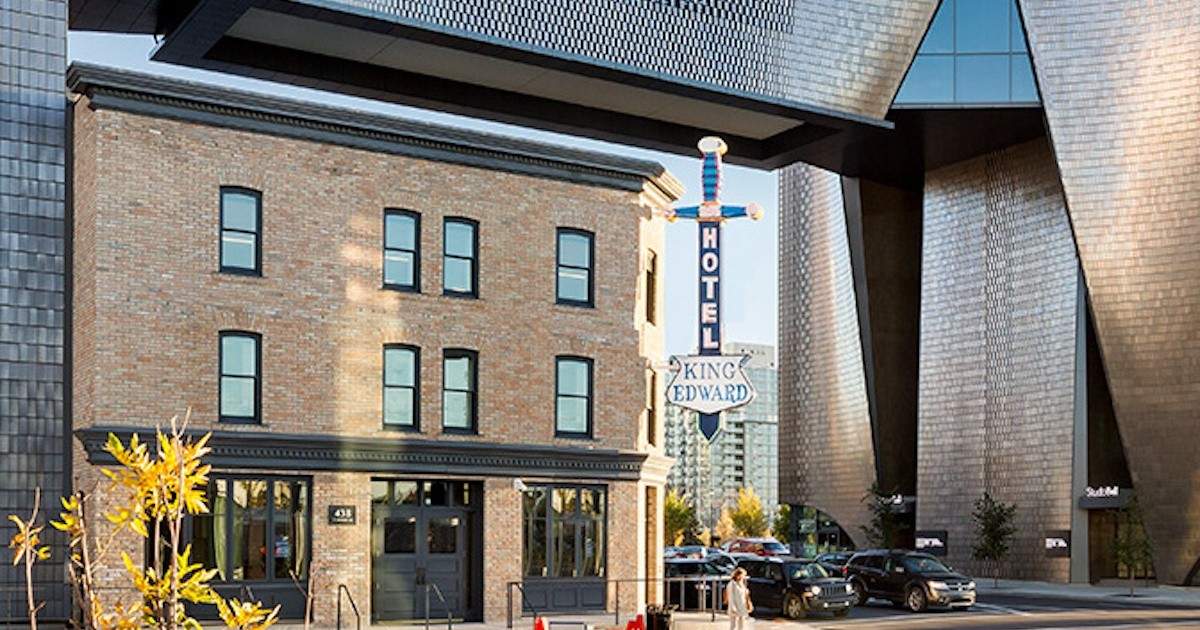
The King Edward is the second oldest hotel in Calgary with the longest running bar. It was built in 1910 on 9th Avenue in the southeast of the city, and it closed in 2004. In 2008, the building was acquired by the National Music Center, and in 2018, a restaurant, bar and music venue opened here, preserving the original appearance of the building both outside and inside.
In order to restore, but at the same time preserve the structure, the century-old hotel was dismantled brick by brick. Even the step in front of the door was saved to be used again later.


